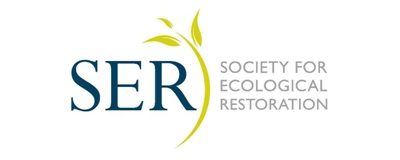 |
Symposia
Three symposia have been organised, namely:
- Biodiversity strategy in New Caledonia mining environment
- Identifying and Overcoming Ecological Filters Limiting Seagrass Restoration
- SERA's Australian Restoration Principles and Standards project: progress to date and potential for adaptation to the broader region.
Please scroll down for more information.

Biodiversity strategy
in New Caledonia mining environment
Mining activity in New Caledonia has increase during the last years. At the same time mining companies developed several programs for conservation and restoration of the exceptional biodiversity of the ultramafic rocks. This symposium will be the opportunity for four new Caledonian mining companies to present and illustrate their strategies and to confront their choices. The presentations will be followed by a panel discussion, drawing questions and suggestions from the audience.
Presentation title: Biodiversity conservation strategy at the Vale New Caledonia project in southern New Caledonia
Presenter: Stephane McCoy, Manager Environmental Conservation Service, VALE NC, New Caledonia
email: Stephane.McCoy[at]vale.com
Presentation Title: Biodiversity monitoring and management on Koniambo
Presenter: Perrine Philippe, Coordinator " Terrestrial biodiversity ", Rehabilitation and Terrestrial Biodiversity department. KONIAMBO NICKEL SAS - KNS, New Caledonia
email: PPhilippe[at]koniambonickel.nc
Presentation Title: SLN Biodiversity strategy
Presenter: Claire Nicolas, Permitting Engineer and biodiversity, SOCIETE LE NICKEL - SLN, New Caledonia email: [email protected]
Presentation title: Seedlings production strategies and rehabilitation plan for the mining center of Tontouta and Ouinné.
Presenter: Nathalie Kaqea, Technician in revegetation. Head of the nursery. Société minière Georges Montagnat - SMGM, New Caledonia email: nkaqea[at]smgm.nc

Identifying and
Overcoming Ecological Filters Limiting Seagrass Restoration
Identifying effective strategies to revegetate degraded seagrass habitat is becoming increasingly important as anthropogenic pressures on coastal ecosystems intensify and because global success of seagrass restoration continues to remain low. Several factors influence restoration outcomes which can be grouped into three 'filter' categories; abiotic, biotic and socioeconomic. Future revegetation programs involving seagrass will undoubtedly require greater emphasis on understanding how these filters act independently or collectively to drive successful revegetation. This symposium delivers a collection of research from five presenters whose research spans several ecological scales, from genetics to landscapes and all in between. The presentations will be followed by a panel discussion, inviting questions and comments from the audience.
Presentation title: Building success from failure: identifying
ecological drivers of seagrass restoration failure in Shark Bay,
World Heritage Area.
Presenter: Dr John Statton, University of Western Australia
email: john.statton[at]uwa.edu.au (lead organiser)
Presentation title: Chaotic genetic patchiness and the recruitment
bottleneck in seagrasses: implications for restoration.
Presenter: Elizabeth Sinclair, University of Western Australia,
email: esinclair3011[at]gmail.com
Presentation Title: Seagrass rehabilitation in South Australia:
a story of loss, action, failure, and success.
Presenter: Andrew Irving, Central Queensland University,
email: a.irving[at]cqu.edu.au
Presentation title: Landscape ecology approach to seagrass
restoration, creation and enhancement decision making.
Presenter: Emma Jackson, Central Queensland University, email:
emma.jackson[at]cqu.edu.au
Presentation title: The stimulation of root formation in
sub-tropical seagrass.
Presenter: Rebecca Hendry, Central Queensland University,
email: r.hendry[at]cqu.edu.au

SERA's Australian
Restoration Principles and Standards project: progress to date and
potential for adaptation to the broader region
This symposium presents a progress report on the SERA project to develop a set of Principles and Standards for Ecological Restoration and Rehabilitation in Australia. It brings together five presentations to illustrate the value of standards as well as potential for application and adaptation of this SERA project to other countries in the region. The presentations will be followed by a panel discussion, drawing questions and suggestions from the audience.
Moderator: Kingsley Dixon (Chair, Society for Ecological Restoration Australasia)
Presentation title: Progress with SERA's Principles and Standards for Ecological Restoration and Rehabilitation: purpose, process and relevance in the real world.
Presenter: Tein McDonald and Justin Jonson, Board members,
SER Australasia, email: tein.mcdonald[at]seraustralasia.com or justin.jonson[at]seraustralasia.com
Presentation title: Developing and Adapting the SEQ Ecological
Restoration Framework ("SEQ Framework").
Presenter: Jen Ford and Rhonda James, restoration consultants
North coast New South Wales and South East Queensland, email: jford[at]ecosure.com.au;
goorambil2[at]bigpond.com
Presentation title: The RIAWA Seed Accreditation Standards
Project - an example of standards embedded in industry.
Presenter: David Hancock, Revegetation Industry Association
of Western Australia RIAWA, email: david[at]naturalarea.com.au
Presentation title: Systematic Evaluation of Ecological Compensation in New Zealand and the Need for Standards.
Presenter: Marie A. Brown and Bruce D Clarkson, Environmental
Research Institute, University of Waitako, New Zealand, email: clarkson[at]waikato.ac.nz
Presentation title: What would be Needed to Adapt SERA's draft Australian Ecological Restoration and Rehabilitation Standards to Make them Useful across the Asia/Pacific Region?
Presenter: David Lamb, University of Queensland, Australia,
email: david.lamb[at]uq.edu.au

|


